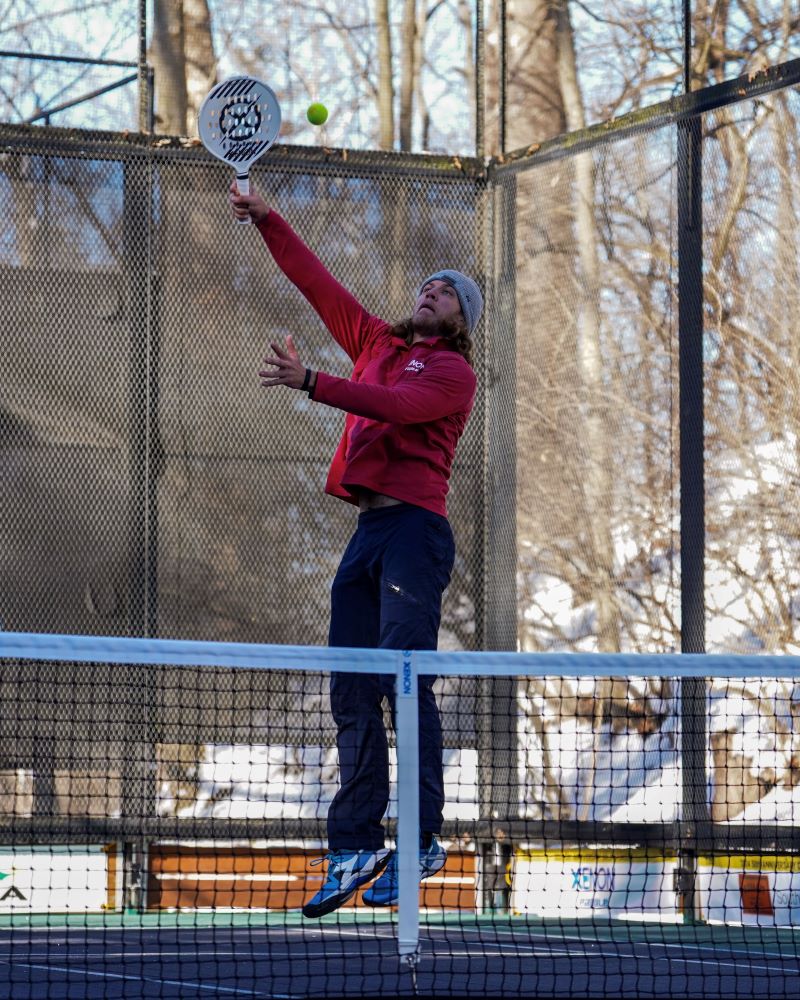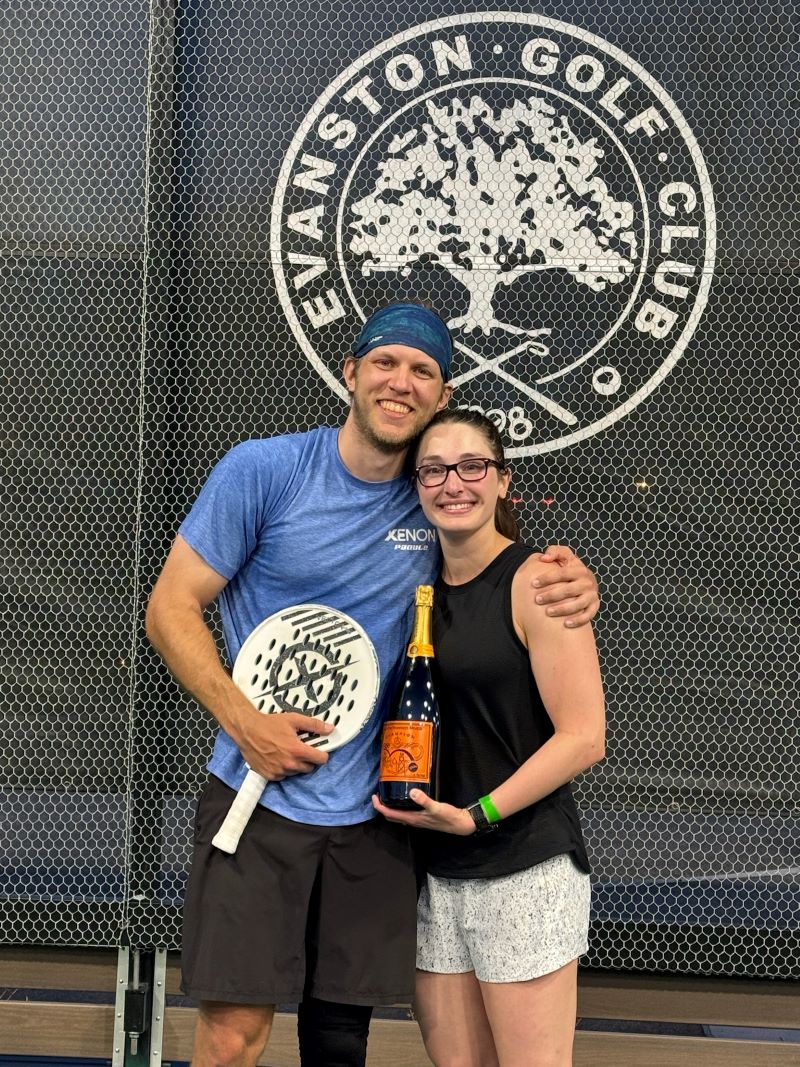NEWS
Coaches Corner: Creating a Game Plan on the Fly

Graham McNerney and Danny Oakes deployed the rare four-back formation to drive a driver nutty.
The Cabin Fever Classic in late December in Chicago brought together a determined group of players to battle the cold, lack of daylight, and each other. Live-Streamers questioned what was going on when Graham McNerney and Danny Oakes employed the little-used four back formation against Mike Cochrane and Tom Murphy in the semifinal.
McNerney took the time to explain his tactics after a curious fan reached out on the platform tennis subreddit to ask “WTH?”
Phase 1: Analyzing Opponents’ Strengths/Weaknesses
Cochrane has an awesome two-handed forehand that is very flat and difficult to read. He prefers hitting at targets/people. Because his ball is so flat, when he unloads, many are sailing. If his opponents aren't trying to volley, there isn't really any reason for him to drive.
Murphy has an exceptional net game, with maybe the best drop volley in the country. He excels at playing the right side at the net. He isn’t as effective playing further off the net near the service line. Also, he likes to play fast-paced points using his excellent reactions to outduel his opponents in hand battles.
We also felt that our conditioning was a major advantage if the match did go long. Playing drawn-out extended rallies was something we felt that was definitely in our favor and we were in no rush to end points unless there were very high-value opportunities to do so.
Phase 2: Developing a Specific Strategy
Stay low at the net. Anything chest high from Cochrane is flying. Expect a drive on every ball. Close the net tight. If you aren't on top of the net, do not try to volley.
No off-pace drives to Tom—his hands are too quick.
Giving up the net is fine. Hit tons of lobs over Cochrane's head to pull Tom across. Make him do a lot of work with zero risk.
McNerney/Oakes go up 4-1 utilizing this strategy.
Phase 3: In-Match Adjustments
Cochrane/Murphy realized that the flow of the points was putting them under significantly more pressure than they put on us. Cochrane/Murphy decided to give up the net freely to change the pattern of play and try to make us uncomfortable.
I had seen Cochrane give up the net before, so I had an idea of how I would want to play it if that happened. We added a few rules to our strategy.
Since Cochrane/Murphy relinquished the net, there was no value in trying to make any volley that could be deemed difficult. We just let the ball go through—they would give us the net back anyway.
We didn't try to take the net on Cochrane's forehand. It's bait. He wanted to drive at our feet. We waited for a lob to bounce deep, Tom to chip a ball, or either one to hit a ball out of position or lob before moving forward.
I let Danny know that I would initiate any taking of net. I consider it a strength of my game, and this way we didn't get caught in any dumb transition trying to cover each other. Danny now knew not to follow me until I clearly established control at net.
When we gained the net, I looked for opportunities to drop volley, knowing that I could let any ball go through and Danny would be there to cover for me.
Summ
They asked us to come to net. We refused unless a very specific set of scenarios were met. We gave up the net freely, knowing that we didn't have to incur any risk to get it back. This went on for a while until they realized it wasn't working. I was getting volleys to end points or overheads. They started getting indecisive. Eventually, they just decided to take the net themselves and tried to hit some harder overheads and play traditional paddle. We were more than comfortable doing so from the baseline and the tactics reverted to the first five games of the match. Danny and I won in two sets. This was a weird combination of extremely specific factors, the most important of which were Cochrane's desire to win points on his forehand and our desire not to lose points on his forehand. Fun stuff.
As commentator Matt McClure called out on the broadcast, “I very much enjoyed it! I view every match as a puzzle to solve and this was a new one that I had never had the chance to try before.”
Graham McNerney is ranked #3 in the nation. He has either won or been a finalist in almost every tournament in the 2024-2025 season. He is known for his long hair, signature bandana, height, cutters that he doesn’t deploy as often as he could, and generally calm demeanor on and off the court. He is also known for his love of stats and strategy. He lives with his wife and 2 cats in Chicago, Illinois.

